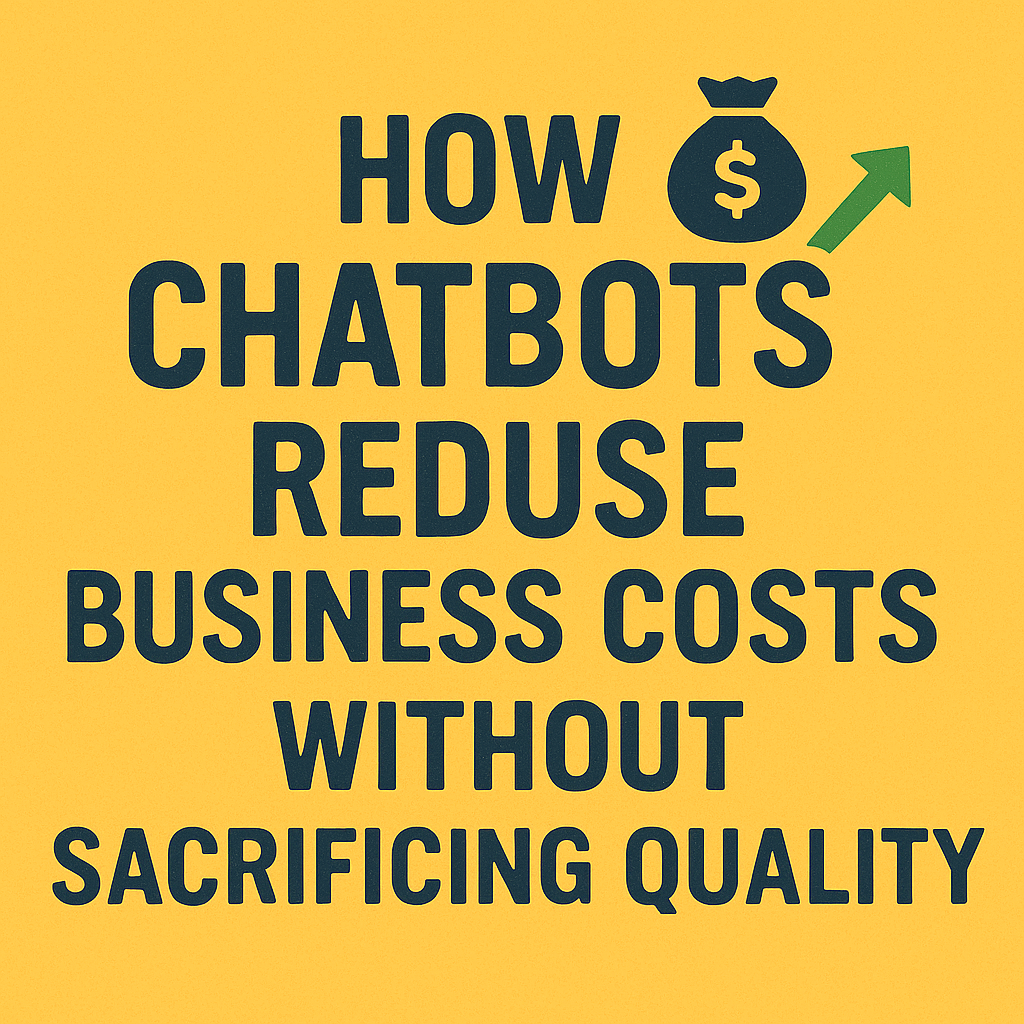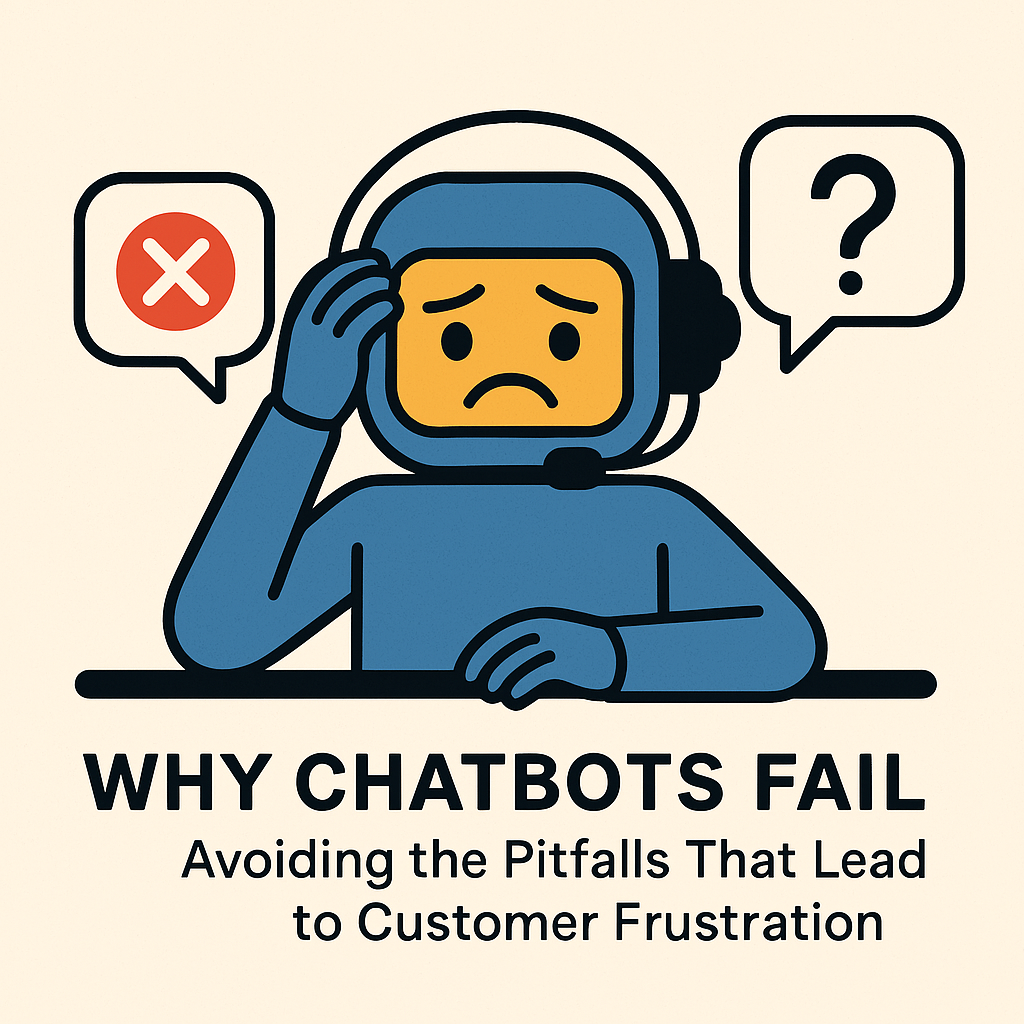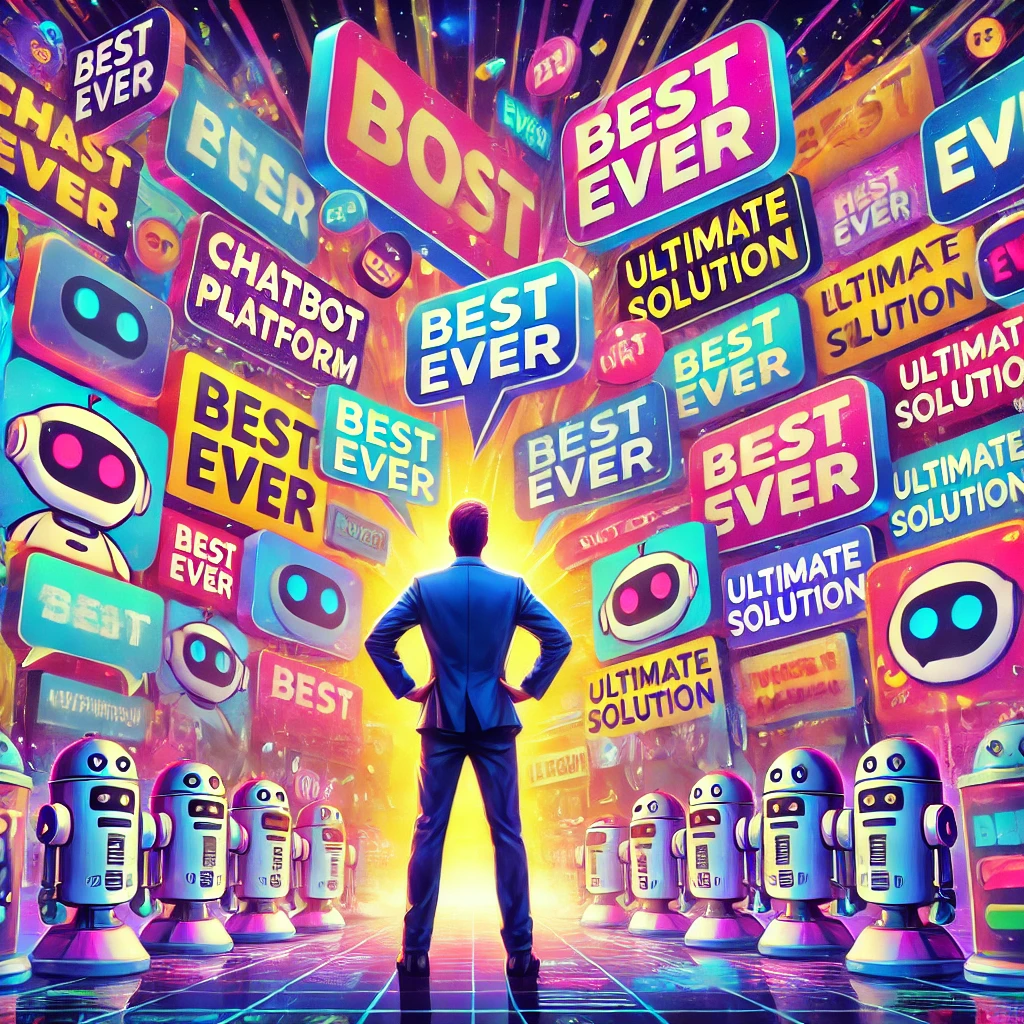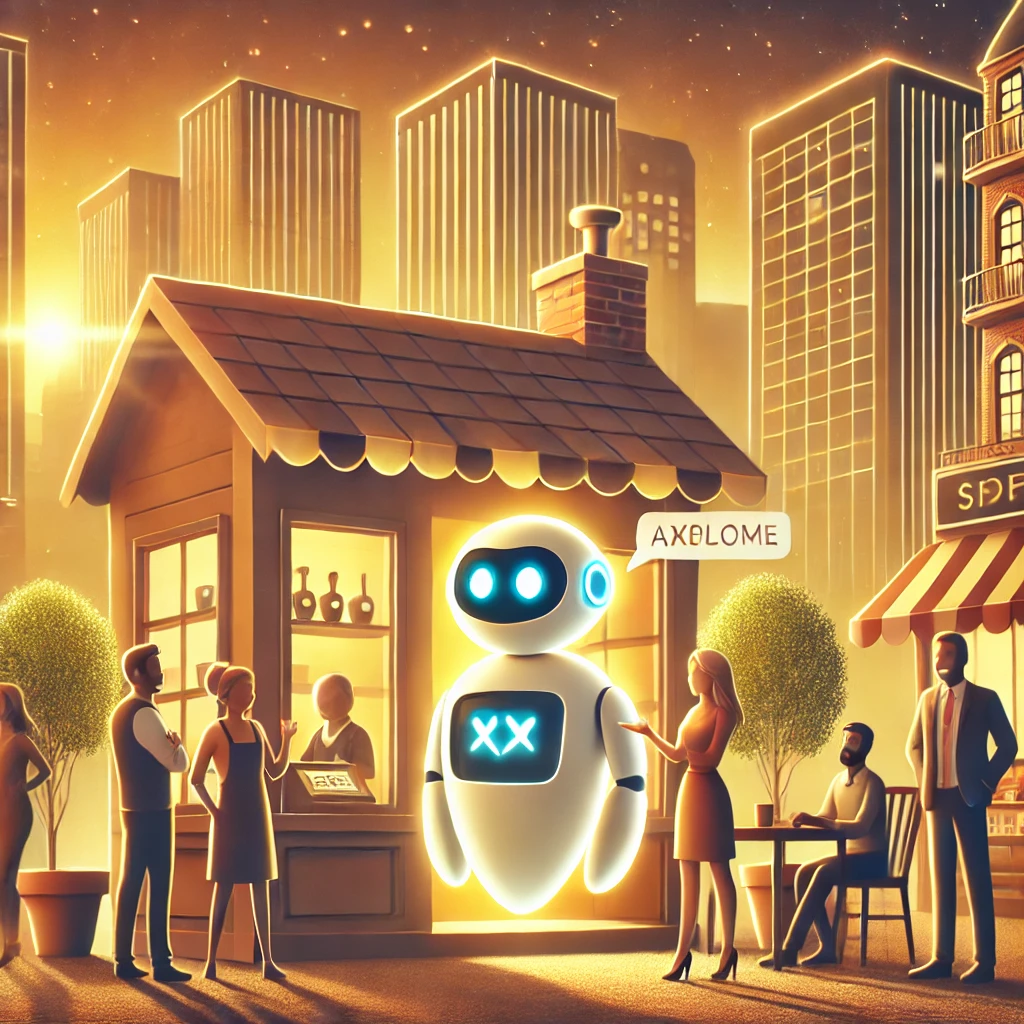Demystifying Generative AI for Business - Practical Use Cases Beyond Content Creation
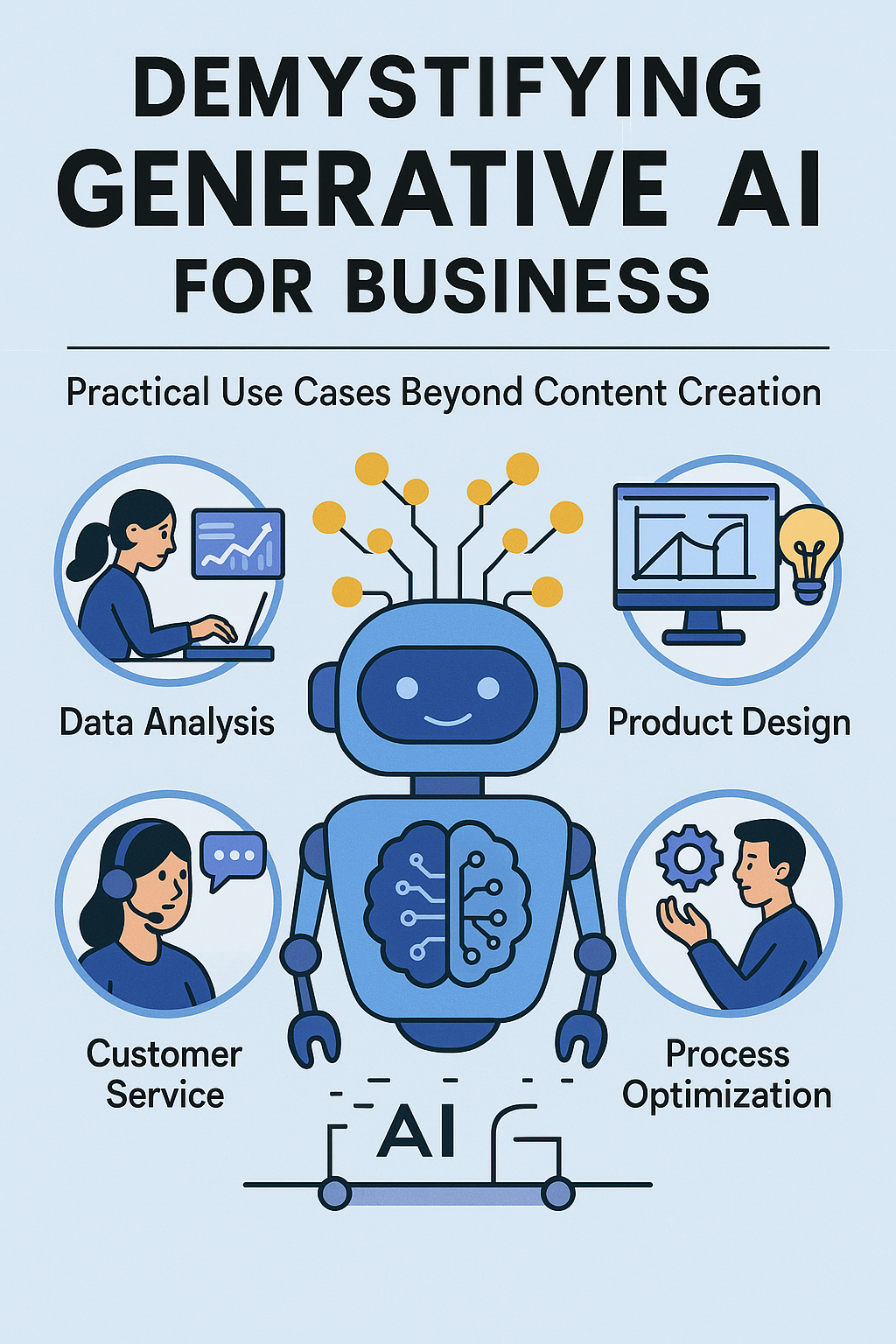
You’ve likely heard the buzz around generative AI – the technology that can create new content like text, images, and even code. While content creation is a prominent application, the potential of generative AI extends far beyond just writing blog posts or designing graphics. Let’s explore some practical and perhaps less obvious ways your business can leverage the power of generative AI to enhance operations, improve customer experiences, and drive innovation.
Boosting Efficiency and Productivity
Generative AI can automate repetitive tasks and streamline workflows, freeing up your team to focus on more strategic initiatives:
Automated Report Generation
Imagine automatically generating summaries of lengthy documents, creating insightful reports from raw data, or even drafting initial versions of financial reports. This isn’t just about saving time – it’s about transforming how your team handles information.
For example, a retail business could use generative AI to analyze weekly sales data and automatically produce a comprehensive report highlighting key trends, outliers, and actionable recommendations. What once took hours of manual analysis can now be completed in minutes, with the AI handling the heavy lifting of data interpretation and presentation.
Code Generation and Assistance
For software development teams, generative AI can assist in writing code snippets, suggesting solutions, and even identifying potential bugs, accelerating the development process.
Even if you’re not running a tech company, this capability can be valuable for businesses that manage their own websites or e-commerce platforms. Generative AI can help suggest improvements to your site’s code, create custom features, or troubleshoot issues without requiring advanced technical expertise from your team.
Data Augmentation and Enhancement
In situations where you have limited data, generative AI can create synthetic data that mimics the characteristics of your real data, allowing you to train AI models more effectively.
This is particularly valuable for smaller businesses that may not have the vast quantities of data that larger corporations possess. With generative AI, you can expand your dataset to uncover insights that might otherwise remain hidden, leveling the playing field with bigger competitors.
Email and Communication Assistance
Beyond standard templates, generative AI can help craft effective business communications tailored to specific situations. Whether you’re responding to customer inquiries, drafting internal memos, or creating project proposals, generative AI can help ensure your message is clear, professional, and aligned with your communication goals.
For businesses handling high volumes of email, this can dramatically reduce response times while maintaining a personal touch in communications.
Personalizing Customer Experiences on a New Level
Generative AI can take personalization beyond basic recommendations:
Dynamic Product Descriptions
Instead of static product descriptions, generative AI can create tailored descriptions based on individual customer preferences or browsing history.
Imagine a furniture retailer whose website automatically emphasizes different aspects of a couch depending on what the customer has been looking at – highlighting the stain-resistant fabric for a parent who’s been browsing kid-friendly items, or focusing on the modern design elements for someone who’s been looking at contemporary decor.
Personalized Marketing Messages
Craft highly targeted and engaging marketing emails or social media posts that resonate with specific customer segments based on their unique needs and interests.
Rather than sending the same newsletter to your entire email list, generative AI can create variations that speak directly to different customer groups – highlighting seasonal products for frequent shoppers, offering educational content for new customers, or featuring loyalty rewards for long-term clients. This level of personalization was once only available to enterprises with large marketing teams, but generative AI makes it accessible to businesses of all sizes.
Interactive Product Demonstrations
Imagine a generative AI-powered tool that can create personalized product demonstrations based on a customer’s specific requirements or questions.
For instance, a software company could use generative AI to create custom tutorial videos that focus on the exact features a prospective customer has expressed interest in. Or a home appliance retailer could generate tailored usage scenarios showing how a particular product would fit into a customer’s specific lifestyle or home environment.
Conversational Shopping Assistants
Beyond basic chatbots, generative AI can power sophisticated shopping assistants that truly understand customer needs and provide genuine help. These assistants can offer product comparisons, make recommendations based on nuanced requirements, and even negotiate objections with human-like reasoning – all without requiring constant updates to their knowledge base.
Accelerating Research and Development
Generative AI can be a powerful tool for innovation:
Generative Design
In fields like engineering and product design, generative AI can explore a vast number of design possibilities based on specific constraints and objectives, leading to innovative and optimized solutions.
Even for small businesses, this can be transformative. A custom furniture maker could use generative AI to explore hundreds of design variations that meet specific requirements for functionality, aesthetics, and cost, finding the optimal balance between competing factors without endless manual iterations.
Drug Discovery and Materials Science
Generative AI can analyze vast datasets of molecules and materials to identify potential candidates for new drugs or innovative materials, significantly speeding up the research process.
While this might seem limited to large pharmaceutical companies, similar approaches can be applied at smaller scales. A local skincare company could use generative AI to explore new formulations that optimize for specific skin benefits while avoiding certain ingredients, greatly accelerating their product development cycle.
Market Trend Analysis and Prediction
Generative AI can analyze patterns in market data to help businesses anticipate changes in consumer behavior or emerging trends. This gives small and medium businesses access to forecasting capabilities that were once the domain of large corporations with dedicated market research teams.
Improving Decision-Making with Data-Driven Insights
Generative AI can help you unlock valuable insights from your data:
Predictive Analytics and Forecasting
By analyzing historical data, generative AI can generate predictions and forecasts to help you make more informed business decisions in areas like inventory management or market trends.
For a small retailer, this might mean better inventory planning based on predicted seasonal demand, reducing both stockouts and excess inventory. For a service business, it could mean more accurate staffing based on anticipated customer volume, optimizing your most valuable resource – your people’s time.
Scenario Planning and Simulation
Generative AI can create simulations of different business scenarios, allowing you to assess potential risks and opportunities before making critical decisions.
Rather than making major business decisions based on gut feeling or limited information, you can use generative AI to model the potential outcomes of different approaches. Whether you’re considering opening a new location, launching a new product line, or changing your pricing strategy, generative AI can help you understand the potential implications before committing resources.
Risk Assessment and Mitigation
For businesses facing complex risk landscapes, generative AI can help identify potential vulnerabilities and suggest mitigation strategies. By generating and analyzing various risk scenarios, businesses can proactively address threats rather than simply reacting to problems as they arise.
Getting Started with Generative AI in Your Business
While implementing generative AI might sound daunting, there are practical steps any business can take:
- Identify pain points in your operations: Where are your teams spending excessive time on repetitive tasks? Where might automation or assistance create the most value?
- Start with readily available tools: Many generative AI capabilities are now accessible through user-friendly platforms that require no technical expertise.
- Experiment and iterate: Begin with small pilot projects in non-critical areas, learn from the results, and gradually expand your use of generative AI.
- Focus on augmentation, not replacement: The most successful implementations of generative AI support and enhance human capabilities rather than attempting to replace them.
Looking Ahead
While the world of generative AI is still evolving, its potential to transform various aspects of your business is immense. By looking beyond content creation and exploring these practical use cases, you can unlock new levels of efficiency, personalization, and innovation.
The good news is that generative AI is becoming increasingly accessible to businesses of all sizes. What was once only available to tech giants with massive research budgets is now within reach of small and medium businesses through various platforms and services.
Let’s embrace the power of generative AI and discover the possibilities it holds for your organization. The future belongs to businesses that can effectively harness these new capabilities – not just the largest companies, but the most adaptable ones.


